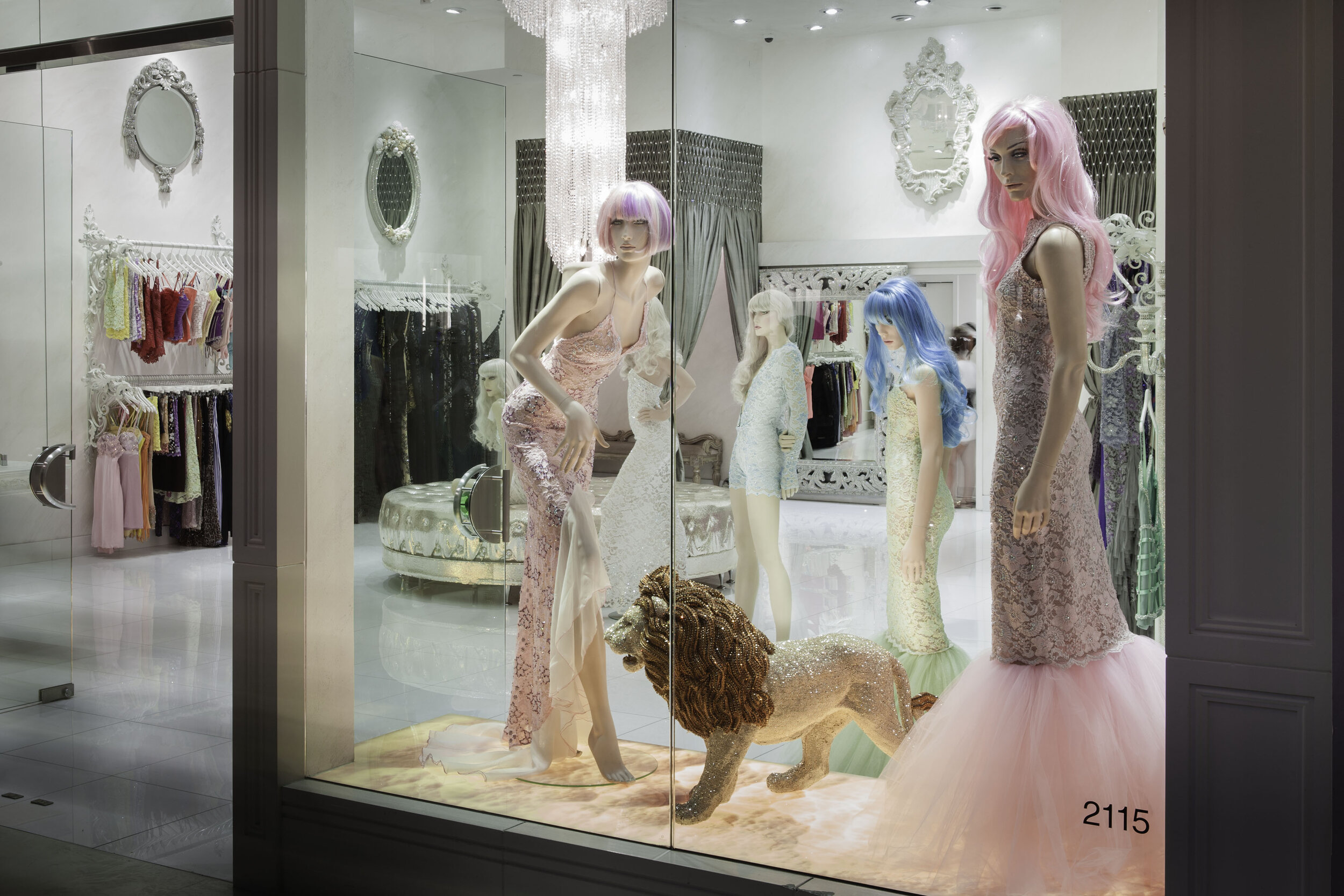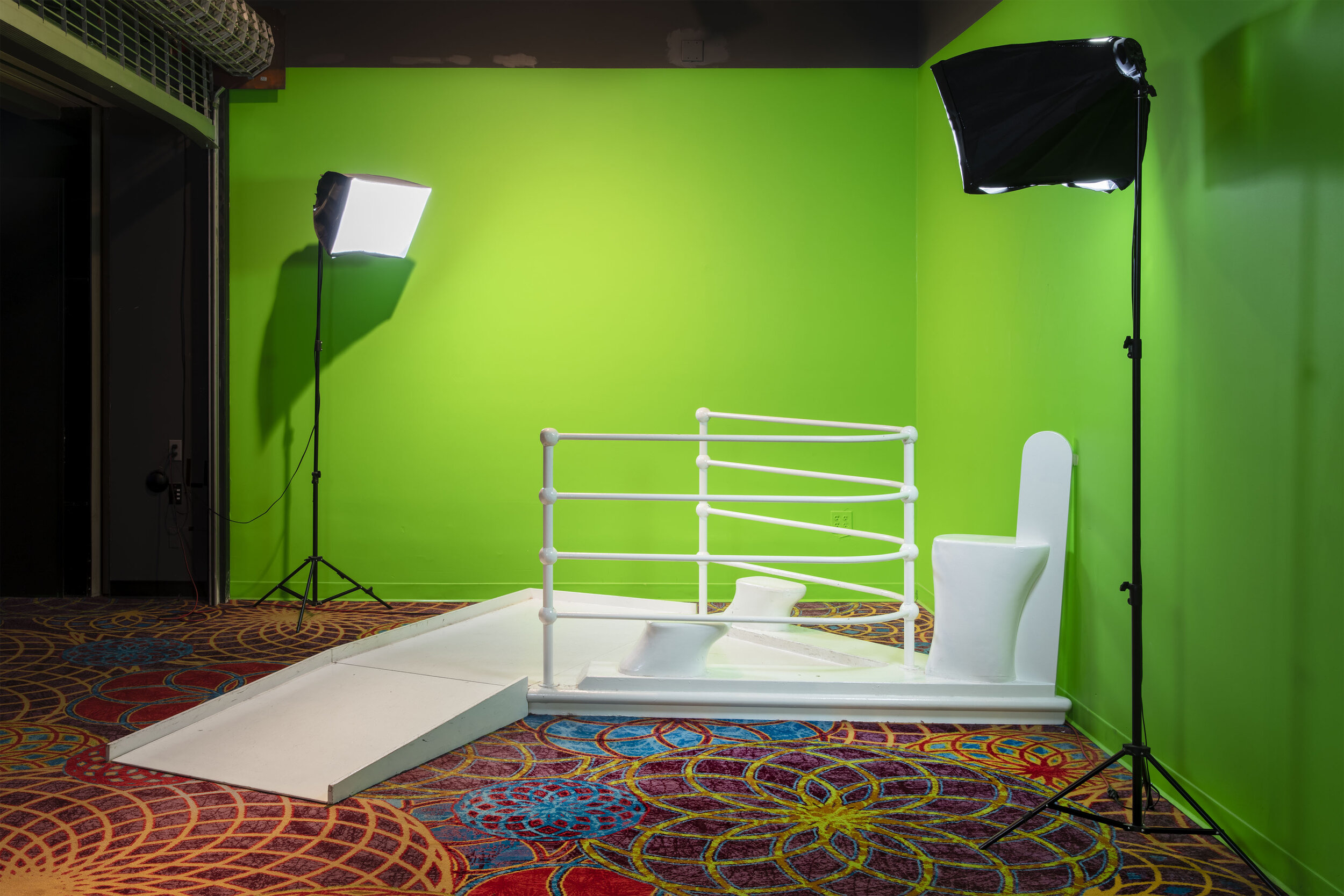ARTIST BIO
Justin Nolan is an artist based in Florida who is interested in how architecture and consumer spaces can elicit a psychological response in those who use these spaces. Over the past 10 years he has been using his camera to document public spaces without the public present.
Nolan’s creative practice investigates social spaces and the built landscape. Much of his work focuses on commercial interiors to illustrate how public spaces can provoke desire, nostalgia, and confusion. A central focus of his work is how American identity is promoted, memorialized, and transmitted through consumer and ‘themed’ spaces.
Nolan holds an MFA from the University of New Mexico and a Bachelors from the University of Wisconsin, Madison. He spent 10 years after undergraduate studies working as an artist, educator, and commercial photographer. During that time, he worked on numerous commissioned assignments for national publications, fashion, and advertising clients. He is currently a Lecturer of Photography at the University of Central Florida. His work has been featured in Fraction Magazine and is represented in the University of New Mexico Art Museum’s permanent collection, the UW Union collection, and the Arizona State University’s Northlight Gallery.
STAGES OF PERSUASION
Fantasy works when the participant in the drama plays along with the storyline. Much of my work investigates the powerful role that staged spaces can have in influencing human desires. Idealized and explicit notions of nature, beauty, and even fear are presented in many of the themed restaurants, stores, and amusement parks I’ve photographed.
Increasingly, themed spaces try to engage the spectator with an ‘experience’ that engages all of the senses, not just the visual. Sounds, smells, and lighting all work along with architectural symbols to create an experience which surrounds the participant. The architecture of these spaces often mix and repurpose familiar symbols so that hospitals might resemble spas and shopping malls could look like cathedrals. The camera isolates and repositions the often-disjointed decorative elements in these public spaces.
These locations actively engage the willing participant in fantasy and play; often the notion of fantasy is explicit and consensual. Other locations like the Apple store or IKEA seek to manipulate in a much more subtle way. These consumer spaces play on aspiration and identity with attention to every detail. In these images, devoid of people, the viewer becomes the audience to the absent narratives in these stages of persuasion.
FLORIDA
Famous the world over, Florida exists more as an idea than an actual place. While most US states base their economy around agriculture and manufacturing, Florida cultivates consumption and tourism as its primary source of income. This myth factory precedes the more modern example in Las Vegas by nearly 100 years as a destination to forget, to imagine, and to remake yourself. While still physically connected to the US at its Northern border, the swamps and alligators crowding this tropical peninsula stand in stark contrast to the rest of the country.
The real history of Florida has been lost and subsumed by sometimes glossy but more often kitschy, tourist elements. Just as Ponce De Leon’s quest for the fountain of youth was a fiction derived from a literary flight of fancy, much of Florida’s true and imagined history are hybrids etched in dayglo colored paint on the face of a ticket booth.
Façade is key to understanding how America represents itself. As Jean Baudrillard famously argues, America is where everything is destined to reappear as simulation. Even in the 1830’s Alexis De Tocquerville saw the important role that plaster and façade played in the then new nation trying to establish its own visual identity. My photographs convey some of the myriad ways in which the image of Florida is imagined and remade in symbol and myth.







